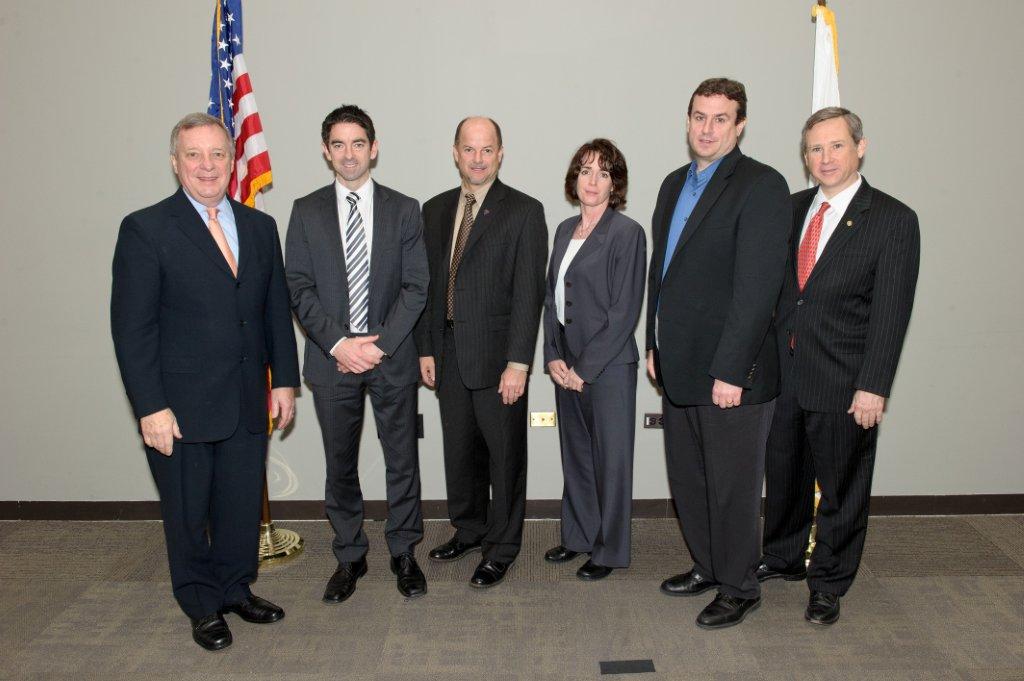 Darren Olson
Darren Olson Darren Olson is in it for the long haul.
So when he attended his first ASCE Legislative Fly-In in 2010, it wasn’t a destination or a peak but rather only the beginning of his advocacy journey.
Olson has since helped lead three iterations of the Illinois Infrastructure Report Card, work that was cited in the state’s 2018 $40 billion capital plan.
And his recent work as part of the Committee on America’s Infrastructure is about to take center stage with the release of ASCE’s 2021 Report Card for America’s Infrastructure, March 3.
Olson, P.E., D.WRE, M.ASCE, vice president and assistant department head, water resources, for Christopher B. Burke Engineering in Rosemont, Illinois, spoke to the Civil Engineering Source about his passion for civil engineering advocacy, how the infrastructure investment conversation has changed over the years, and where the new Report Card positions civil engineers for the future.
Civil Engineering Source: What’s inspired your more-than-a-decade of advocacy work?
Darren Olson: I thought the Legislative Fly-In was the most interesting, well-run, eye-opening experience through ASCE that I was ever involved in. I thought it was a great opportunity for engineers to go and talk to our elected officials and be the experts in the room talking to them about infrastructure.
I’ve always told my fellow civil engineers that it’s an event they need to attend just so they get a broader perspective of where we fit in and how we can help educate our elected officials on infrastructure.
We’re the experts. They don’t know any more about infrastructure than we know about being a senator, so we need to educate each other on how we can help each other. I think that it was really an inspiring event for me to go to my first Fly-In and just to see how we fit into the big picture.
Source: Has your advocacy work changed the way you approach your job or how you see projects?
Olson: Absolutely, absolutely. I feel like I have a broader perspective on infrastructure in general and what different people’s approaches to infrastructure and infrastructure investment might be. When I discuss my own projects, I’m able to bring that insight to help my clients, to help municipalities. And I’m able to come to it with a much broader perspective to the whole process. I think it’s been really great.
Source: How have you seen the infrastructure conversation change over the last 10 years?
Olson: I really feel like infrastructure in the last 10 years has gone from something that has been talked about mainly by engineers to now being something that we hear from the latest “Build Back Better” program that President Biden is promoting.
Really talking about how infrastructure can be a vehicle not only for our own competitive economic advantage in the world’s economy but also for a way to provide great jobs for the American people – not just great jobs, but great jobs in new and emerging technologies, in green infrastructure.
These are areas where I think we’re just scratching the surface as to what they mean for our economy, what they mean for our environment, and what they mean for our citizens and our workers. I think that that is an avenue that has changed a lot, and I’m excited about where that could potentially lead us.
Source: Have you had some legislative wins at home in Illinois in recent years?
Olson: Yes, and I think probably my most fulfilling moment with report cards was with our 2018 Illinois Infrastructure Report Card where the state received a C-minus.
Shortly after that we had a new governor in office, and he put together an infrastructure plan for the state. And in this big plan, on page 1, in the second paragraph of the executive summary, it referenced our state Report Card and the grade that we gave the state. And to have that be a part of the impetus for the governor and the state of Illinois to start investing in our infrastructure really was unbelievably rewarding because of all this work we’d put into it.
It was our third Report Card, and we had really laid the groundwork and established these relationships. So to then see it being used for exactly the purpose that we put it in place, which was to promote investment in our infrastructure, was incredibly rewarding.
Source: Do you have a sense of where you feel like this 2021 Report Card can fit into this conversation?
Olson: I think the Report Card is always a bit of a wake-up call to our elected officials. That’s really why we do it, to educate our elected officials and the American public.
It’s funny, the last report card in 2017 was on The Colbert Report, it was on mainstream news, not just news but mainstream late-night shows and internet clips of our infrastructure, what the condition is. It will be the same this time, and I think the timing is fantastic because we’re at this critical point where we’ve got a need to get people back to work.
We’ve got a need to continue to invest in our infrastructure and transform it with technology and green initiatives and climate change resilience.
I think that there’s a great opportunity for this Report Card to really make a difference in how we as a nation view our infrastructure and where it can take us.



